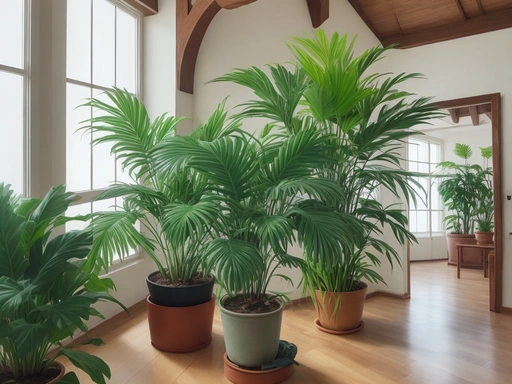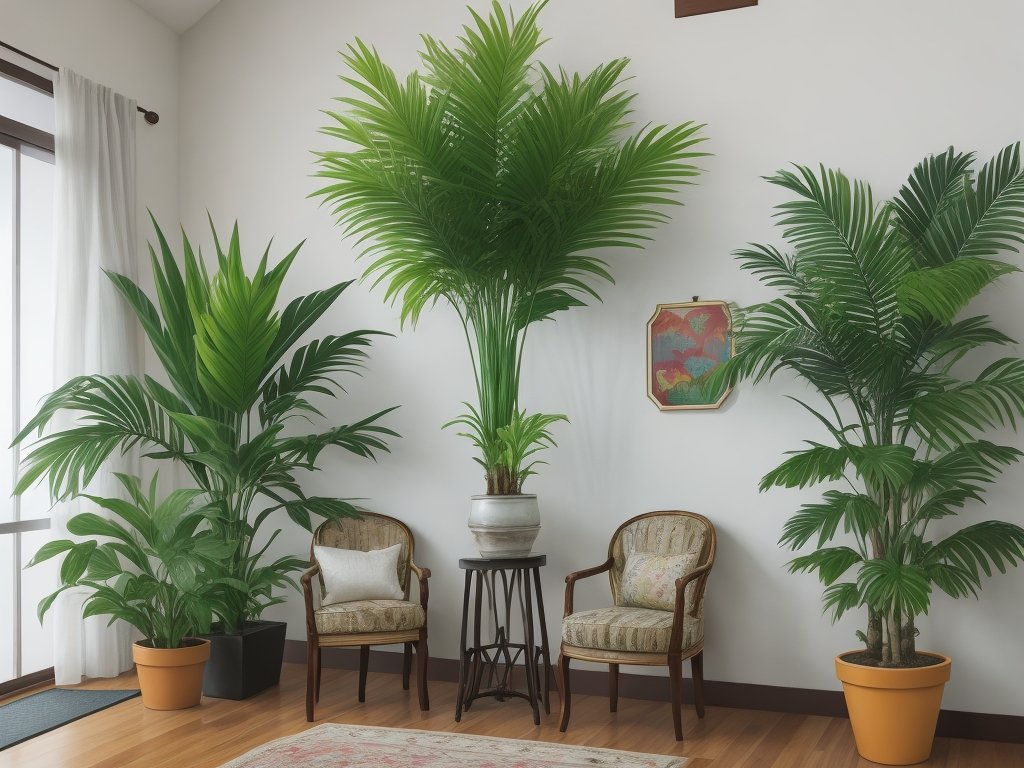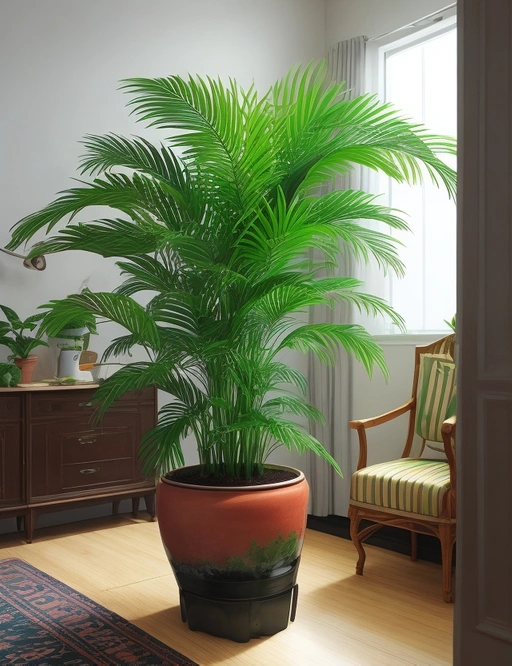Parlor Palm And Low Light Conditions: Thrive in the Shade
Key Takeaways:
- Parlor palms thrive in low light conditions, making them an ideal choice for indoor spaces with limited sunlight.
- Despite their ability to tolerate low light, parlor palms still require some indirect light to maintain their health and growth.
- Adequate humidity is important for parlor palms, especially in low light conditions, to prevent dryness and promote healthy foliage.
- Regular watering and proper drainage are essential for parlor palms in low light conditions, as overwatering can lead to root rot.
Do you have a dark corner in your home or office that needs a touch of green?
Look no further than the Parlor Palm.
This elegant and resilient plant thrives in low light conditions, making it the perfect choice for spaces without direct sunlight.
In this article, I will guide you on how to grow and care for the Parlor Palm in low light environments.
From understanding low light conditions to providing adequate watering and maintaining the right temperature and humidity, I’ve got you covered.
So, let’s shed some light on how to create a little green oasis in those dimly lit spaces!
| Parameter | Parlor Palm |
| Scientific Name | Chamaedorea elegans |
| Common Names | Parlor Palm, Neanthe Bella Palm, Good Luck Palm |
| Light Requirements | Thrives in low to moderate light conditions |
| Indoor/Outdoor | Primarily grown as an indoor plant |
| Size | Typically grows up to 3-6 feet (0.9-1.8 meters) in height |
| Growth Rate | Slow |
| Watering | Moderate watering; allow the top inch of soil to dry between waterings |
| Humidity | Thrives in normal household humidity levels |
| Temperature | Optimal temperature range is 60-85°F (15-29°C) |
| Soil | Well-draining potting soil |
| Fertilizer | Feed with a balanced liquid fertilizer monthly during the growing season |
| Pests/Diseases | Susceptible to spider mites, mealybugs, and scale insects |
| Benefits | Air purifier, easy to care for, adds a touch of greenery to indoor spaces |
Growing Parlor Palm in Low Light Conditions
Growing Parlor Palm in low light is totally doable! Just find the right spot and give it some TLC.
Understanding Low Light Conditions
Understanding low light conditions is essential for successfully growing plants indoors. Low light refers to areas where natural sunlight is limited, such as north-facing rooms or spaces further away from windows.
In these conditions, plants receive lower levels of light intensity and quality, which affects their growth and development.
It’s important to remember that different plants have varying degrees of tolerance to low light conditions. Some plants, like the parlor palm, are well-suited for low light environments and can thrive with limited sunlight.
However, it’s crucial to know the specific light requirements of your plant to ensure its health and vitality.
Why Choose the Parlor Palm for Low Light Environments?
The Parlor Palm is an excellent choice for low light environments because it is highly adaptable and can thrive in minimal light conditions. It has evolved to survive in the understory of tropical forests, where it receives filtered or indirect sunlight.
The Parlor Palm’s ability to tolerate low light makes it perfect for offices, apartments, or any room with limited natural light.
Plus, its lush green foliage adds a touch of nature and beauty to any space. So, if you have a low light environment, the Parlor Palm is a fantastic plant to consider.

Suitable Low Light Locations for Parlor Palm
Parlor palms thrive best in low light conditions, making them suitable for areas with indirect or filtered light. Some ideal locations include north-facing windows, shaded corners of rooms, and areas away from direct sunlight.
They can also be placed in bathrooms or offices with low light levels.

Caring for Parlor Palm in Low Light Conditions
Caring for a Parlor Palm in low light conditions requires attention to watering, drainage, temperature and humidity, fertilizing, pruning, and managing pests and diseases.
Providing Adequate Watering in Low Light
In low light conditions, it’s important to strike a balance with watering. Parlor palms don’t like their roots to stay constantly wet, so avoid over-watering.
Instead, check the soil regularly and only water when the top inch feels dry.
Be sure to use well-draining soil and provide enough water to thoroughly moisten the root ball without letting it sit in standing water. This way, you can keep your parlor palm healthy and happy in low light.

Proper Drainage for Parlor Palm in Low Light
Proper drainage is crucial for a Parlor Palm in low light conditions. Without it, the roots may become waterlogged, leading to root rot and other issues.
Make sure the pot has drainage holes and use well-draining soil.
Avoid overwatering as it can worsen drainage problems.

Maintaining the Right Temperature and Humidity in Low Light
Maintaining the right temperature and humidity is crucial for the well-being of your parlor palm in low light conditions. Aim for a temperature range of 60-75°F (15-24°C) and humidity levels between 40-60%.
To achieve this, you can use a humidifier, place a tray of water near the plant, or mist the leaves occasionally.
Avoid placing the plant near drafts or heat sources, as this can negatively impact its growth. With the right temperature and humidity, your parlor palm will thrive even in low light environments.
Fertilizing the Parlor Palm in Low Light
To fertilize the Parlor Palm in low light conditions, it’s important to use a balanced liquid fertilizer. Dilute the fertilizer to half the recommended strength and apply it every two months during the growing season (spring and summer).
Be careful not to over-fertilize, as this can harm the plant.
Additionally, make sure to follow proper watering practices and provide adequate drainage to prevent nutrient build-up in the soil.
Pruning and Grooming Tips for Parlor Palm in Low Light
To keep your Parlor Palm looking its best in low light conditions, regular pruning and grooming is important.
Here are some tips:
- Remove any dead or yellowing leaves: Trim off any leaves that appear brown, yellow, or dried out. This will not only improve the plant’s appearance but also prevent the spread of any potential diseases.
- Cut back leggy growth: If your Parlor Palm starts growing tall and leggy, you can prune it back to encourage bushier growth. Simply trim the stems to the desired height, making sure to retain some healthy leaves on each stem.
- Maintain a compact shape: Regularly trim any long, straggly stems to maintain a neat and compact shape. This will help prevent the plant from becoming too sparse or lopsided.
- Remove any pests: Check your Parlor Palm regularly for any signs of pests, such as mealybugs or spider mites. If you spot any, gently wipe them off with a damp cloth or use an organic insecticidal soap to control the infestation.
- Clean the leaves: Dust can accumulate on the leaves, especially in low light conditions. Wipe the leaves gently with a soft damp cloth or spray them with water to remove any dust and keep them looking fresh.
Common Pests and Diseases in Low Light Environments and How to Treat Them
Common pests that can affect the parlor palm in low light environments include spider mites, mealybugs, and scale insects.
To treat these pests, you can:
- Spider mites: Use a mixture of mild soap and water to wash the leaves, making sure to target the undersides where the mites hide. Repeat the process regularly until the infestation is under control.
- Mealybugs: Remove the visible bugs by hand or with a cotton swab dipped in alcohol. Follow up with an insecticidal soap spray to eliminate any remaining bugs. Repeat the treatment as necessary.
- Scale insects: Use a soft brush or sponge dipped in rubbing alcohol to remove the scales from the leaves and stems. Alternatively, you can use an insecticidal soap spray or horticultural oil to control the infestation. Repeat the treatment every few weeks until the scales are gone.
It’s also important to regularly check your parlor palm for signs of common diseases such as root rot and leaf spot.
If you notice yellowing or wilting leaves, discolored spots, or a foul odor coming from the soil, it may indicate root rot.
To treat this, you need to improve drainage and reduce watering.
Leaf spot, characterized by brown or black spots on the leaves, can be caused by overwatering or poor air circulation.
Cut off the affected leaves, improve air circulation, and avoid spraying water directly onto the leaves.
By being vigilant and taking appropriate action, you can keep your parlor palm healthy and thriving in low light conditions.
Frequently Asked Questions about Parlor Palm and Low Light Conditions
Can a Parlor Palm Survive in Complete Darkness?
No, a Parlor Palm cannot survive in complete darkness. While it can tolerate low light conditions, it still needs some indirect or filtered light to grow and thrive.
Complete darkness can lead to stunted growth and even death for the plant.
It’s important to provide at least some light for your Parlor Palm’s survival.
How Often Should I Water My Parlor Palm in Low Light?
In low light conditions, you should water your Parlor Palm sparingly. It’s important to avoid overwatering, as this can lead to root rot.
Check the soil moisture before watering by sticking your finger about an inch into the soil.
Only water when the top inch feels dry. Remember, it’s better to underwater than to overwater your Parlor Palm.
Can I Use Artificial Light to Supplement the Low Light Conditions for My Parlor Palm?
Yes, you can definitely use artificial light to supplement low light conditions for your Parlor Palm.
Just make sure the light source is suitable for plants, such as a full-spectrum grow light.
Place the light near the plant and keep it on for around 8-12 hours a day.
This will help provide the necessary light energy for your Parlor Palm to thrive even in low light conditions.
Will the Parlor Palm Thrive in the Bathroom with Low Light?
Yes, the Parlor Palm can thrive in the bathroom with low light.
It is well-suited for low light environments and can tolerate shade.
Just make sure it still receives some indirect sunlight.
The moisture and humidity in the bathroom can also benefit the plant.
Is the Parlor Palm Toxic to Pets?
The Parlor Palm is non-toxic to pets, including dogs and cats. So you can have peace of mind knowing that if your furry friend decides to take a nibble on your Parlor Palm, it won’t harm them.
However, it’s always a good idea to discourage your pets from eating any houseplants, as some may cause digestive upset.
Final Verdict
The Parlor Palm is an excellent choice for low light environments due to its ability to thrive in these conditions. Understanding the specific needs of the plant, such as proper watering, drainage, temperature, and humidity, will ensure its health and longevity.
Regular pruning and grooming are important for maintaining its aesthetic appeal.
While pests and diseases can be a concern in low light, they can be treated effectively with proper care and attention. Overall, the Parlor Palm is a resilient and beautiful plant that can bring life to any low light location.







